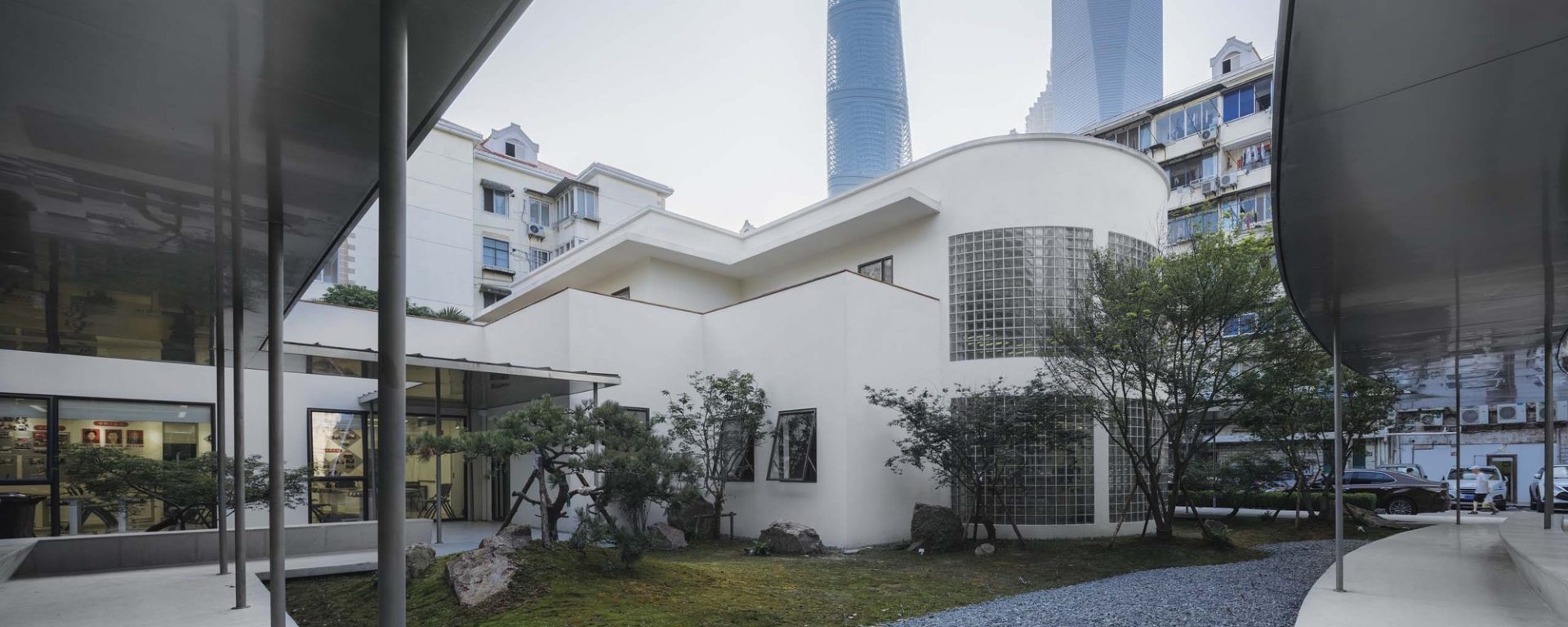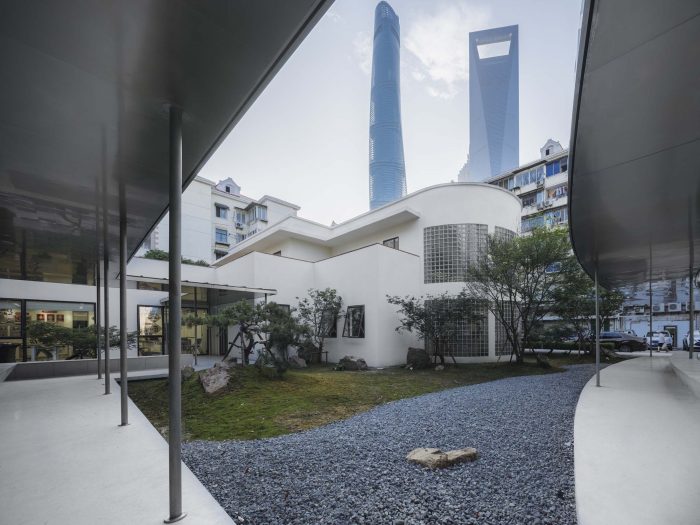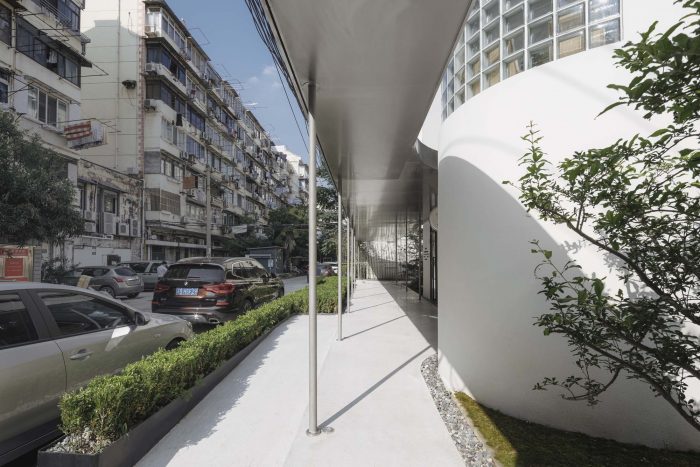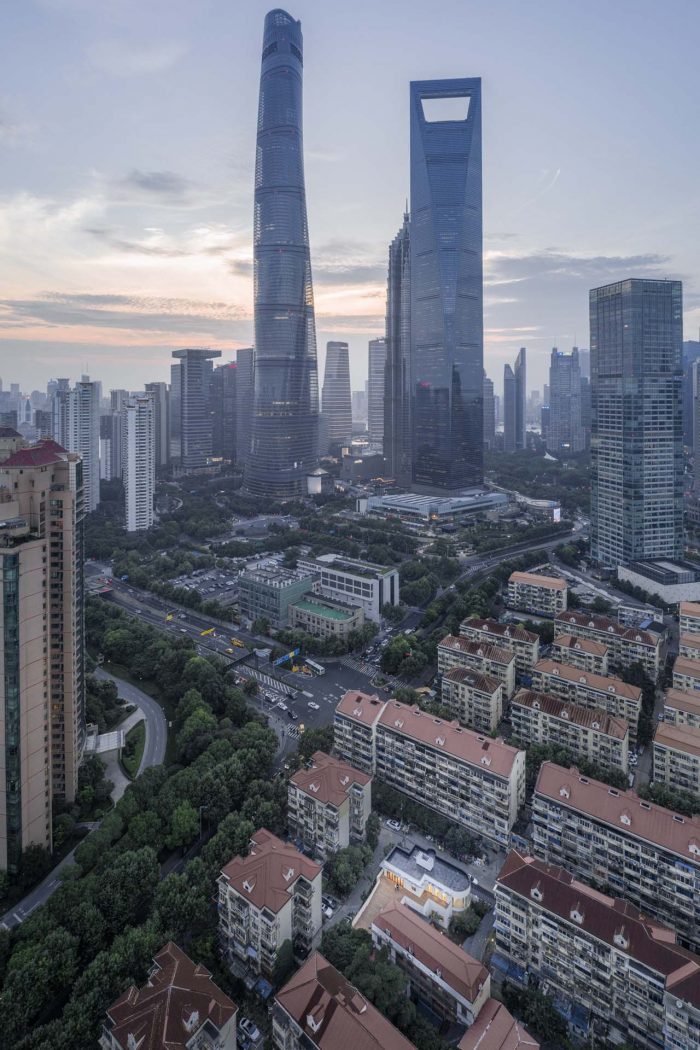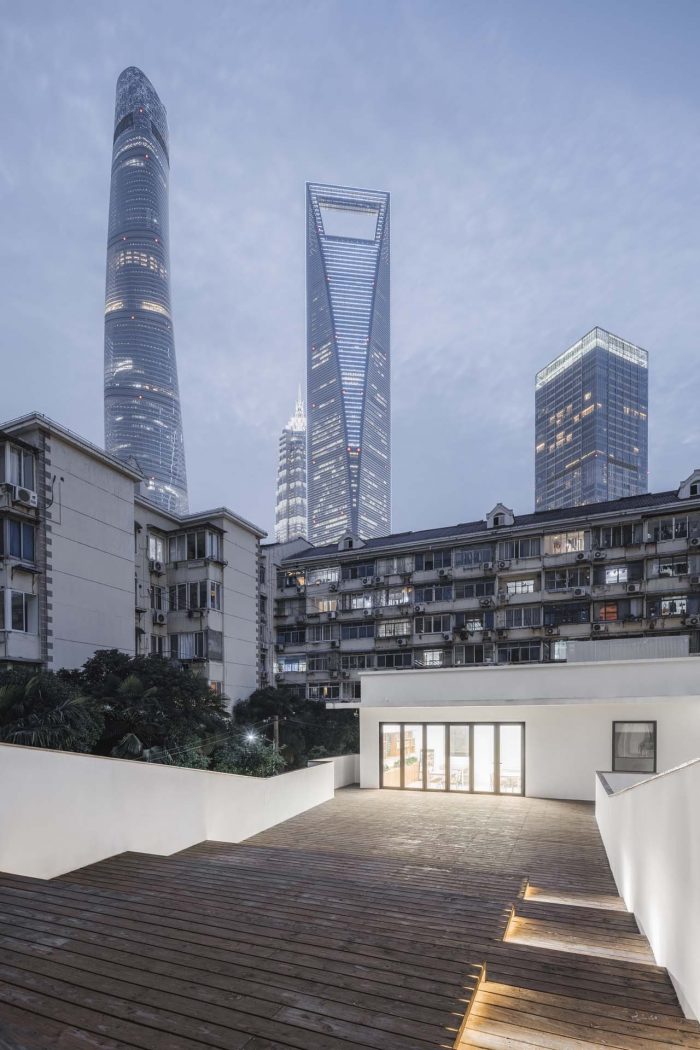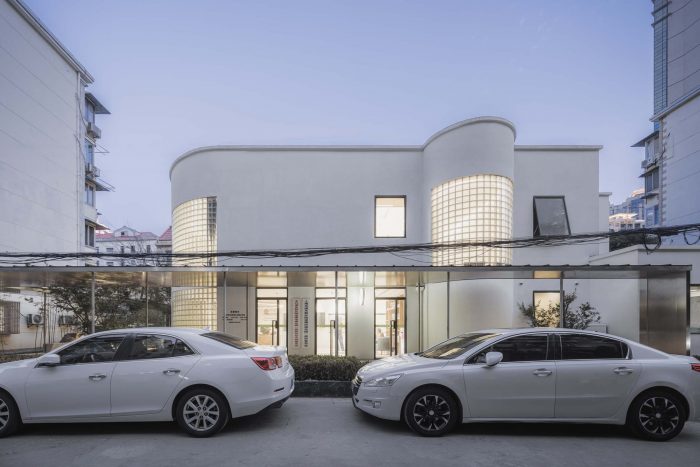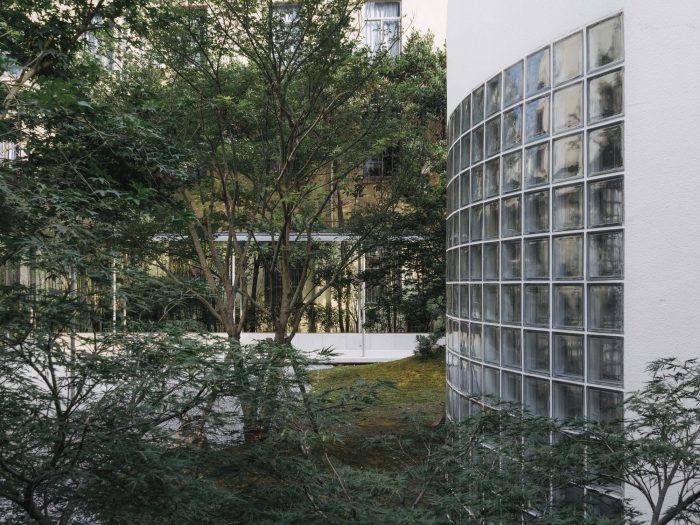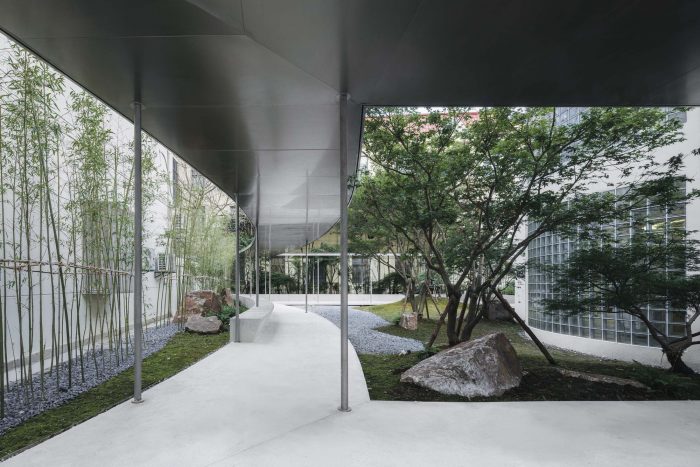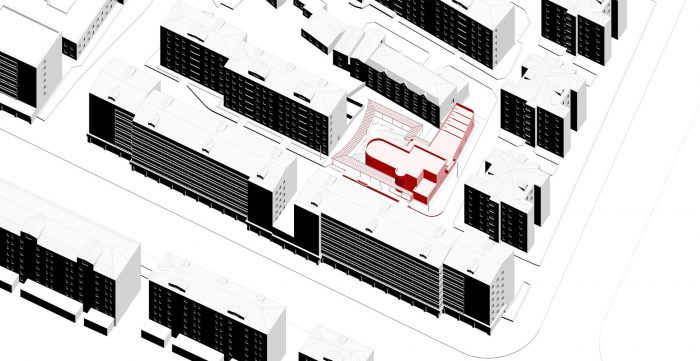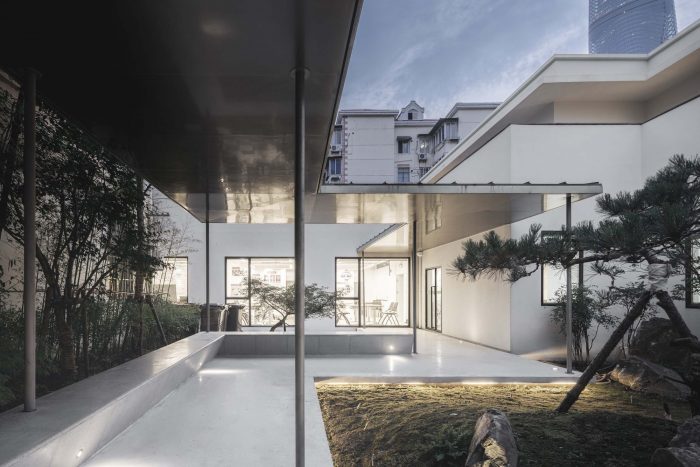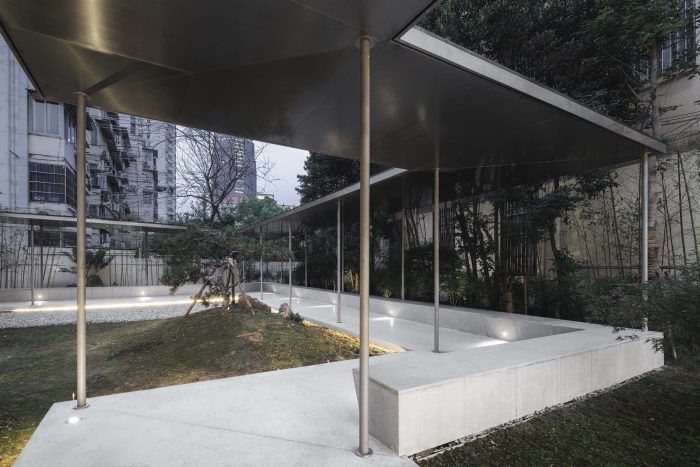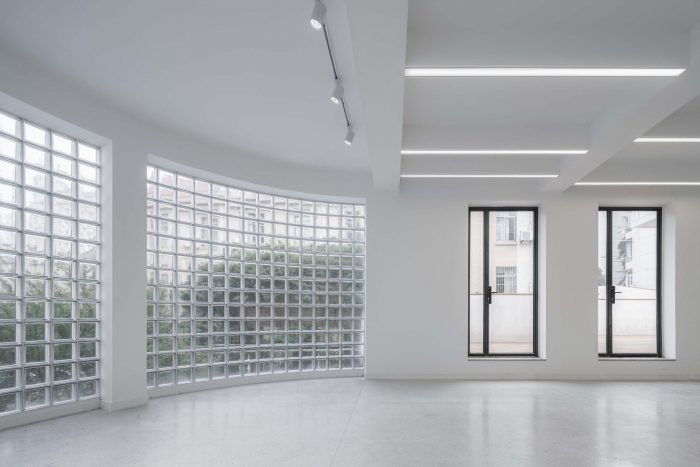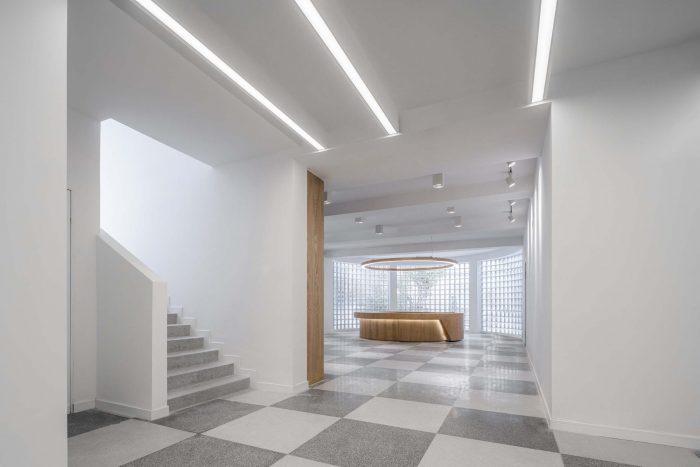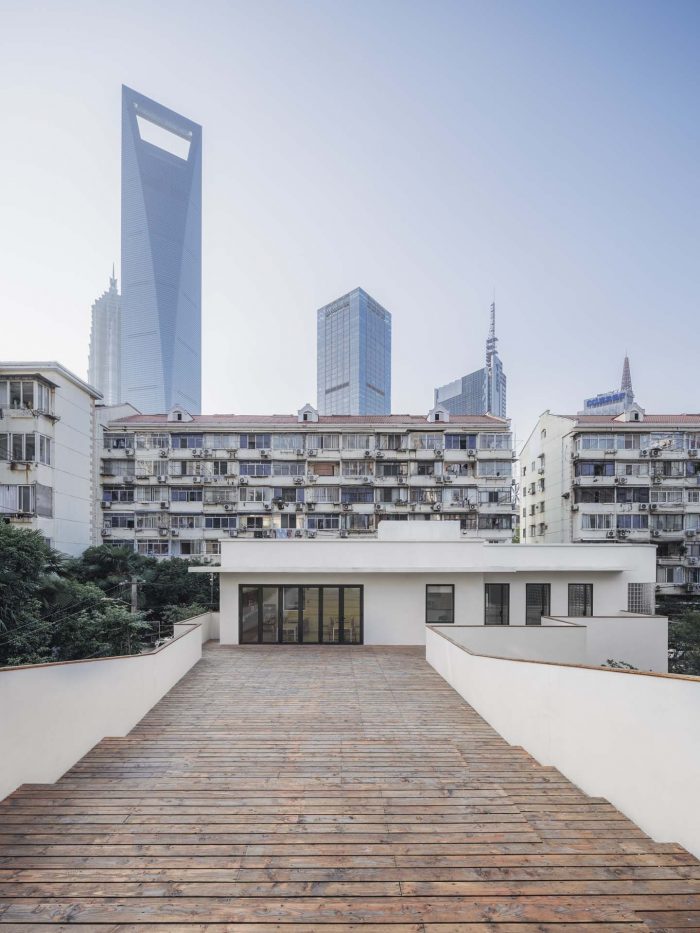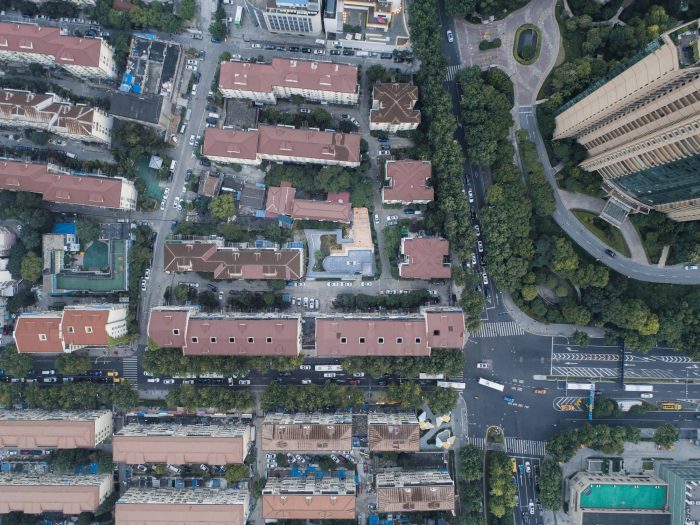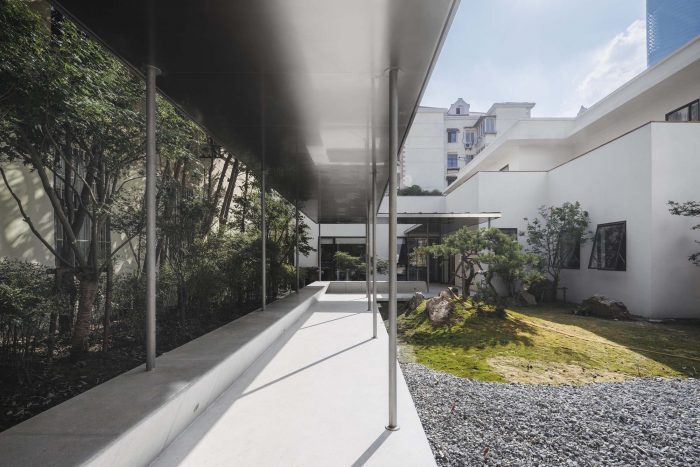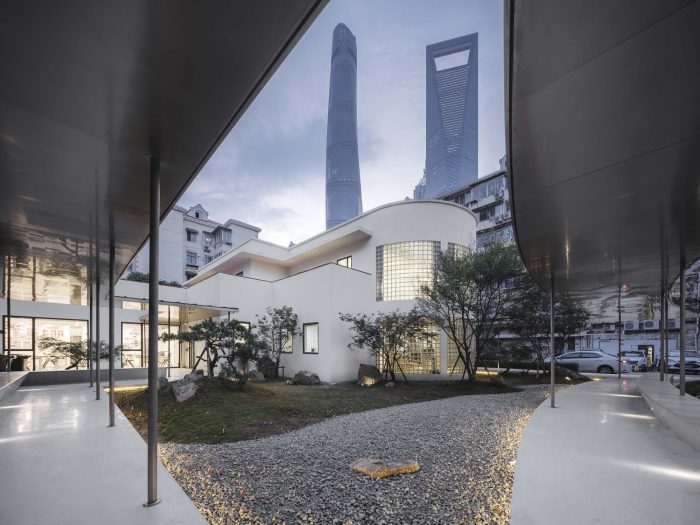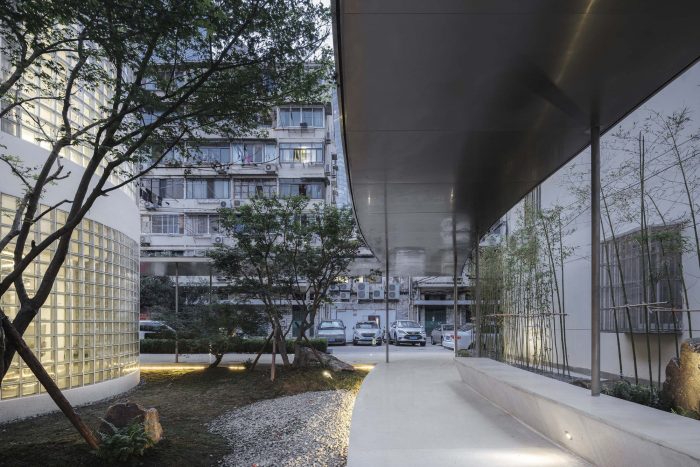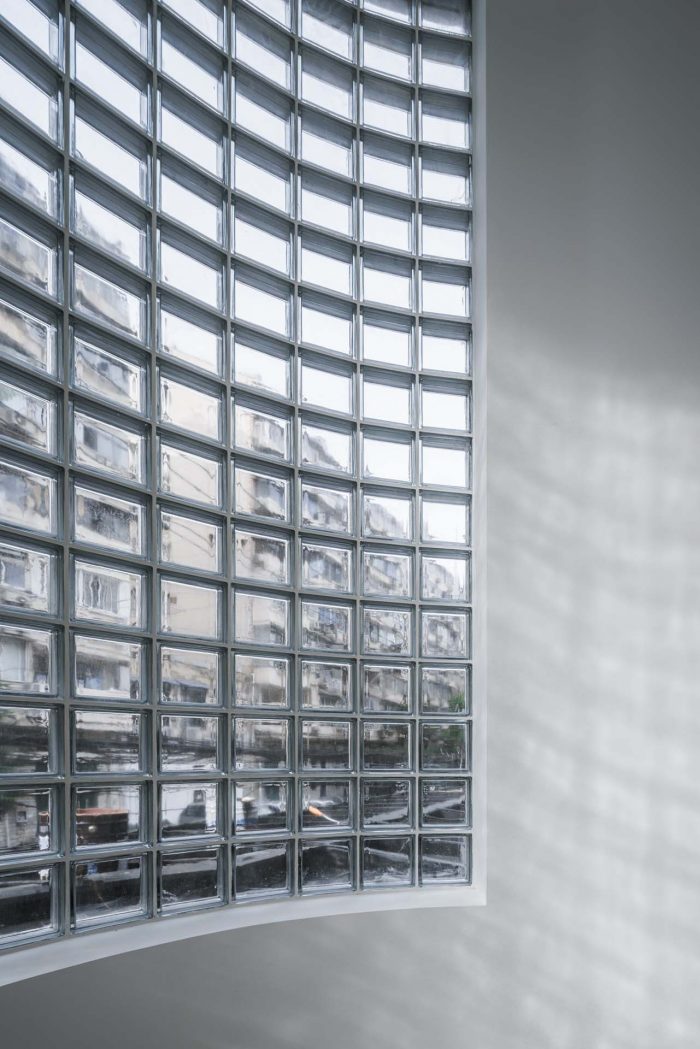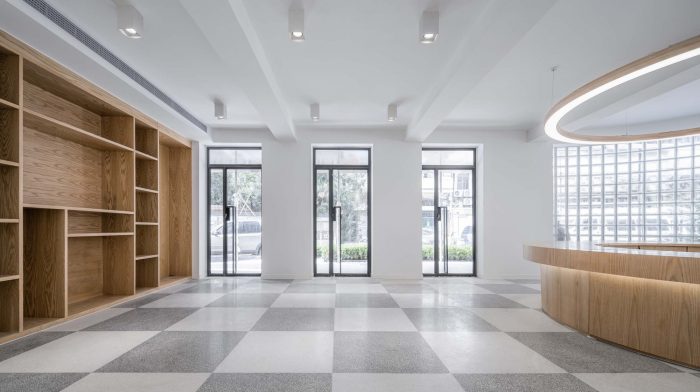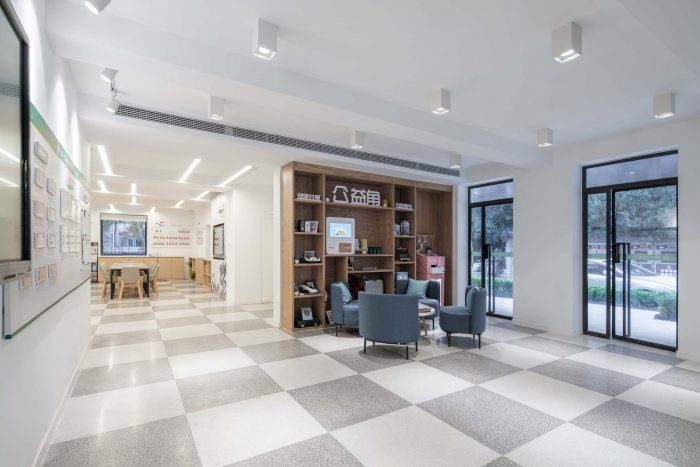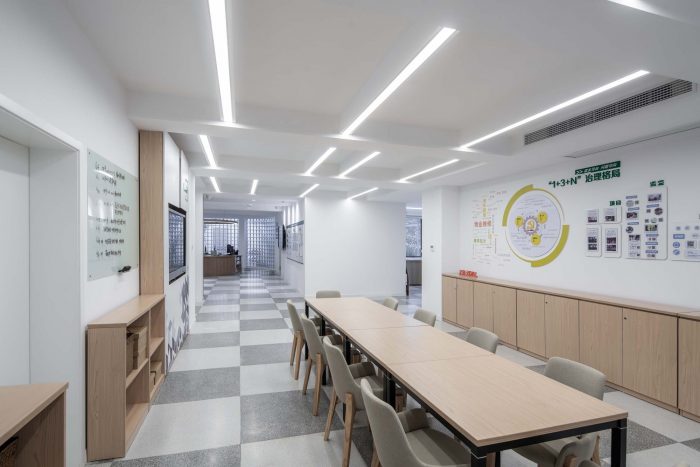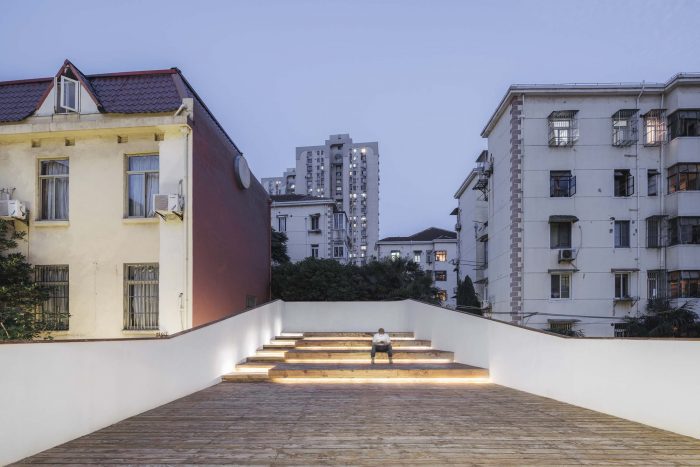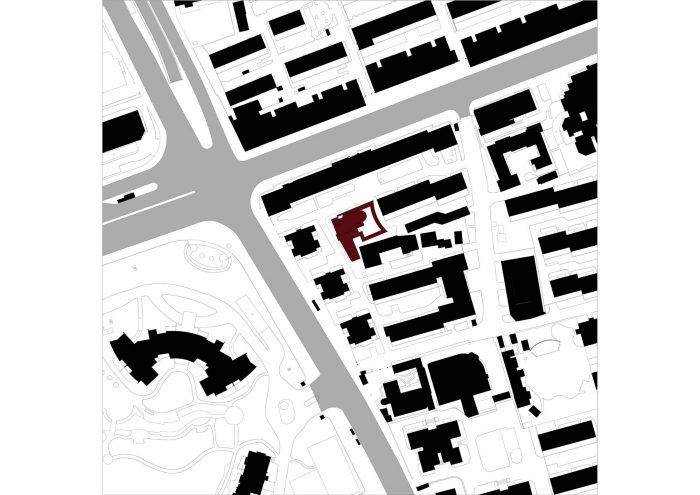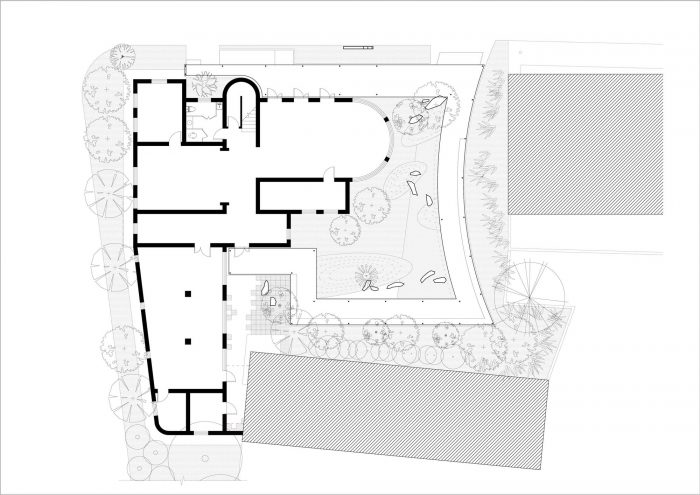东苑新村位于浦东新区陆家嘴中心区,是上世纪80年代开始建设的多功能住宅小区,除了住宅外,还有宾馆、幼儿园、商业中心和文化设施。除住宅楼外,还有酒店、幼儿园、商务中心和文化设施。在陆家嘴地区高速发展的同时,周边的豪华商业地产也在不断涌现,老东苑新村正面临着门第化和城市更新的压力。作为陆家嘴区政府主导的东苑文化园更新规划项目的一部分,近年来,东苑新村板块内已建成了文化中心和社区图书馆。
Dongyuan New Village is located in the central zone of Lujiazui, Pudong district. It is a mix-use residential block has been built since 1980s. Besides of residential buildings, there are hotels, kindergarten, business center and cultural facilities. Surrounding by luxury commercial real estates which are growing up flowing the high-speed development of Lujiazui district, the old Dongyuan New Village is facing the pressure of gentrification and urban renewal. As parts of the renewal planning project of Dongyuan Culture Park which is leading by Lujiazui Subdistrict Office, a culture center and a community library had been built within the block of Dongyuan New Village in recent years.
我们的项目是在现有建筑的基础上进行改造的,该建筑位于东苑新村二村的中心位置。周围是居民楼,但后面紧挨着一个国际旅社。该建筑原为社区卫生中心,后改造为社区服务站。作为东苑新村内的一个更新项目,设计要求响应社区文化改造。
Our project is based on the transformation of an existing building, which is located in the center of the Second Village of Dongyuan New Village. It is surrounding by residential buildings, but close to an international hostel on back. The building was used as community health center, and then is transformed to be community service station. As a renewal project within Dongyuan New Village, the design is asked to response to the culture reformation of the community.
现有的建筑是一栋两层的小楼,连着一个院子,其特点是典型的90年代风格。其特点是典型的90年代造型艺术风格,外墙附着装饰物,内部空间封闭、黑暗。内部空间封闭而黑暗。建筑和院子用围墙和铁门与社区隔开。
The existing building is a small, two floors building with a yard together. Its feature was typical style of 1990s’ plastic arts, with decorations attached on outer walls. The inside spaces were closed and dark. The building and its yard were separated from the community by fence walls and iron gate.
改造设计的主要思路有两个方面。一方面,围墙和铁门被拆除,然后封闭的地方已经向居民开放。该地的空间特征从分离转变为共享和交流。同时,创造了一个新的回廊,将院子与建筑连接在一起,组合出一个新的小巧玲珑的现代中式园林设计。这样一个由建筑、廊道、景观组成的整体被命名为 “东园”,这是一个属于东园新村居民的开放、共享的公共空间。
The main idea of transformation design is twofold. On the one hand, the fence walls and iron gate were removed and then closed place has been opened to inhabitants. The spatial character of the place was transformed from separation to sharing and communication. At the same time, a new veranda is created to connect the yard with the building together, combined a design of a new tiny, delicate, modern Chinese garden. Such a whole composed of building, veranda and landscape is named as the Dong Garden, which is an opened, shared, public space belonging to inhabitants of Dongyuan New Village.
另一方面,由于现有建筑的砖墙承重体系,结构基本保留,内部空间略有变化。拆除了外墙的装饰,恢复并加强了原有的形态特征。空间布局进行了重新设计,入口处重新设计并拆除,直接面向道路。一楼为社区服务站,二楼安排了两个居民游戏室。有一个露台,被改造成一个小小的室外剧场,当人们打开折叠玻璃门时,它可以与游戏室相连。
On the other hand, due to the existing building’s brick wall loading system, the structure is basically remained and interior spaces have been changed slightly. The decoration on outer walls was removed, and the feature of its original form has been restored and reinforced. The layout of spaces has been reset, the entrance was redesigned and removed to facing to the road directly. The ground floor is used for community service station, and the second floor is arranged with two playrooms for inhabitants. There is a terrace, transformed to a tiny outdoor theater, which can be connected with the playroom when people open the folding glass door.
中国园林被视为传统生活空间的理想类型,也是中国悠久历史的高雅文化的媒介。与上海社区更新项目中广泛采用的主导策略–大众文化产品相比,东园的提出为东园文化公园的打造提供了另一种文化内容。这不仅是因为需要一个宁静优雅的场所与周边的居住环境相适应,而且中国园林的现代类型化应该在社区的日常生活中创造一个精神空间,并在社区更新的过程中促进文化发展的丰富性和多元性。
Chinese garden is seen as an ideal typology of traditional living space, and also a medium for the culture of elegance in a long history in China. Dong Garden is proposed to offer an alternative culture content for the creation of Dongyuan Culture Park, in comparison with those popular culture productions occurring as leading strategy adopted widely in community renewal projects in Shanghai. It is not only because a peaceful and graceful place is required to fit the surrounding residential environment, but also a modern typology of Chinese garden is supposed to create a spiritual space within the everyday life of the community, and to contribute to the richness and multiplicity of cultural development in the process of community renewal.
建筑师:Wuyang Architecture
面积: 500 m²
年份:2019年
摄影作品:Qing Ai
设计团队:陆峰、杨金雄
室内设计:五洋建筑+LAI设计
景观设计:Atelier VISION
结构顾问:张志军
城市:上海
国家:中国
Architects: Wuyang Architecture
Area: 500 m²
Year: 2019
Photographs: Qing Ai
Design Team:Lu Feng, Jinxiong Yang
Interior Design:Wuyang Architecture + LAI design
Landscape Design:Atelier VISION
Structure Consultant:Zhun Zhang
City:Shanghai
Country:China

